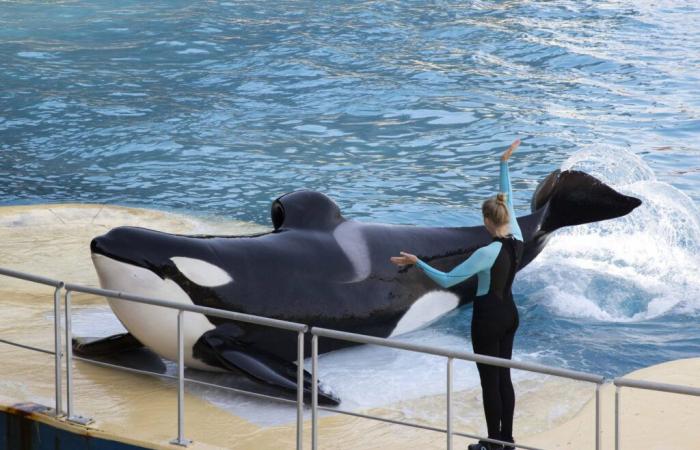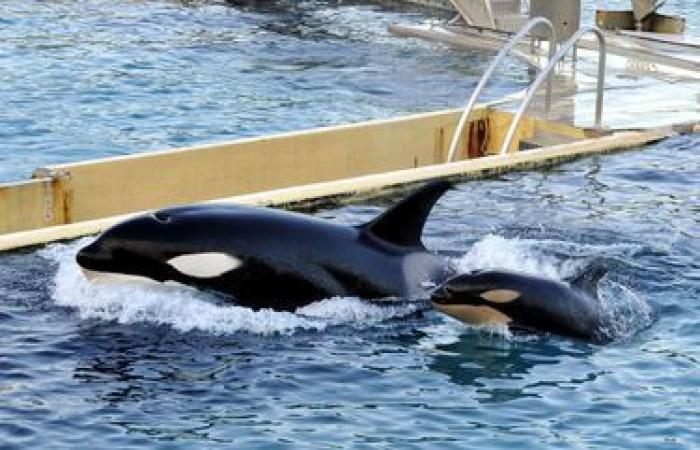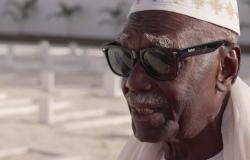It’s a soap opera that keeps the French in suspense. Wikie and Keijo, the last two orcas in France, will not go to Japan, announced Monday, November 25, Minister of Ecological Transition Agnès Pannier-Runacher. The two mammals, aged 23 and 11 years respectively, are the last survivors of the controversial Marineland in Antibes. The Côte d’Azur dolphinarium has no choice. He has until 1is December 2026 to move its cetaceans outside of France. This decision follows the Pompili law on animal abuse, which established, on November 30, 2021, the end of shows and the detention of cetaceans. Move them, yes, but where?
Not in Japan, according to the decision of Agnès Pannier-Runacher, who considers that the regulations on animal welfare are not “as thorough” as in France. “There are parks which, today, are able to accommodate orcas. I am thinking of that of Tenerife, in Spain, which is subject to European regulations,” she spoke to TF1. The Loro Parque, in the Canary Islands, is in fact the only European park to already have orcas. It is located approximately 3,000 kilometers from Antibes compared to 13,000 for Kobe Park. “Bringing them there would be a disaster,” explains Muriel Arnal, president of the animal rights association One Voice, which is campaigning for these large black and white cetaceans, which have only known captivity, to be welcomed. in a marine sanctuary and not sent to continue the shows in a less protective country.
Wikie and Keijo, in 2011.
AFP / © AFP
According to her, the Loro Parque has “smaller” pools than the Marineland in Antibes. And four orcas have died there in four years, including Keto, a 3,000-kilogram male aged 29, known for killing his trainer, Alexis Martinez, during a rehearsal for a show. The orca had drowned the young man with its rostrum, inflicting fatal injuries on him, including fractures and organ damage. “In Tenerife, Wikie and Keijo would find themselves breeding among extremely violent orcas they don’t know. It’s guaranteed death,” says Muriel Arnal.
The rest after this ad
What is the sanctuary project in Canada?
With several associations including PETA, One Voice is working on the creation of a 44-hectare marine sanctuary in Nova Scotia (eastern Canada) in which the two cetaceans could end their days. A titanic project! Because, to acclimatize to their new environment, they would be placed for the first year in a sort of floating enclosure which is three times the surface area of the Marineland in Antibes. It would include a hospital pool and all the necessary infrastructure for veterinarians to be present 24 hours a day, 7 days a week. The project would already be validated by members of the First Nations in Canada and financially supported by private donors. “We are not asking for money from the Antibes dolphinarium nor from the government. We have already received millions of dollars to provide care for the orcas once they are there,” explains Ms. Arnal.
On Tuesday, the Minister of Ecological Transition refuted this idea, justifying that the sanctuary did not exist. “Today, there is no sanctuary in Nova Scotia. No sanctuary is able to accommodate orcas,” she insisted.
Keiko’s sad memory
Several attempts to return to the wild have already been undertaken in the past. Keiko, the orca star of the film “Save Willy”, took his last bow in 2003 in a Norwegian fjord, without ever having managed to return to the wild despite the approximately 20 million dollars spent on him. help. Captured in 1979 off the coast of Iceland at the estimated age of two years, he had spent most of his life in maritime amusement parks. The six-ton animal had earned its reputation by appearing in the three films of the “Save Willy” series which notably tell the story of a little boy who tries to free an orca.
Following a massive international mobilization campaign to obtain his release, he was transported at great expense to Iceland in 1998, aboard a US Air Force cargo plane, to follow, for four years, a program supposed to teach him to catch his own food, mainly herring. Up to twenty people worked on his rehabilitation in a marine swimming pool specially built for him. A true tourist curiosity in his new vacation spot, Keiko had never managed to cut the link with men, on whom he remained dependent for his food – around 40 kg of herring per day -, stubbornly reluctant to join his peers.
A team of caretakers day and night
Defenders of the sanctuary project in Canada know it: it will be impossible for Wikie and Keijo to return to the wild. This is why a team of caregivers must be at their bedside day and night. “Wikie and Keijo were born in glass cages. Their parents were born in these same aquariums. Imagine your dog is placed in the middle of the bush. He won’t last two minutes. It’s not a wolf. It will be the same situation for orcas. Wikie and Keijo are pets. They didn’t choose it, obviously. But they will not be able to survive on their own in the wild. They know nothing about the marine world,” explains Renaud de Stephanis, who has been studying the orca population of Gibraltar for thirty years.
Wikie and Keijo in Antibes, in 2011.
GIRL / © BEBERT BRUNO/GIRL
The doctor in environmental sciences still fears that they will, in spite of themselves, carry diseases. “Like us, Wikie and Keijo are full of antibiotics and ultra-resistant thanks to modern medicine. If we put them in the open sea, and they bring diseases, this could cause genocide on other marine mammals, which are not artificially protected,” he warns.
Still, the situation of the two cetaceans is pending. Muriel Arnal warns that the health of Wikie and Keijo should not be neglected during this period of doubt. Two of the four orcas that Marineland held until last year died recently, one from septicemia and the other after ingesting a piece of metal.







